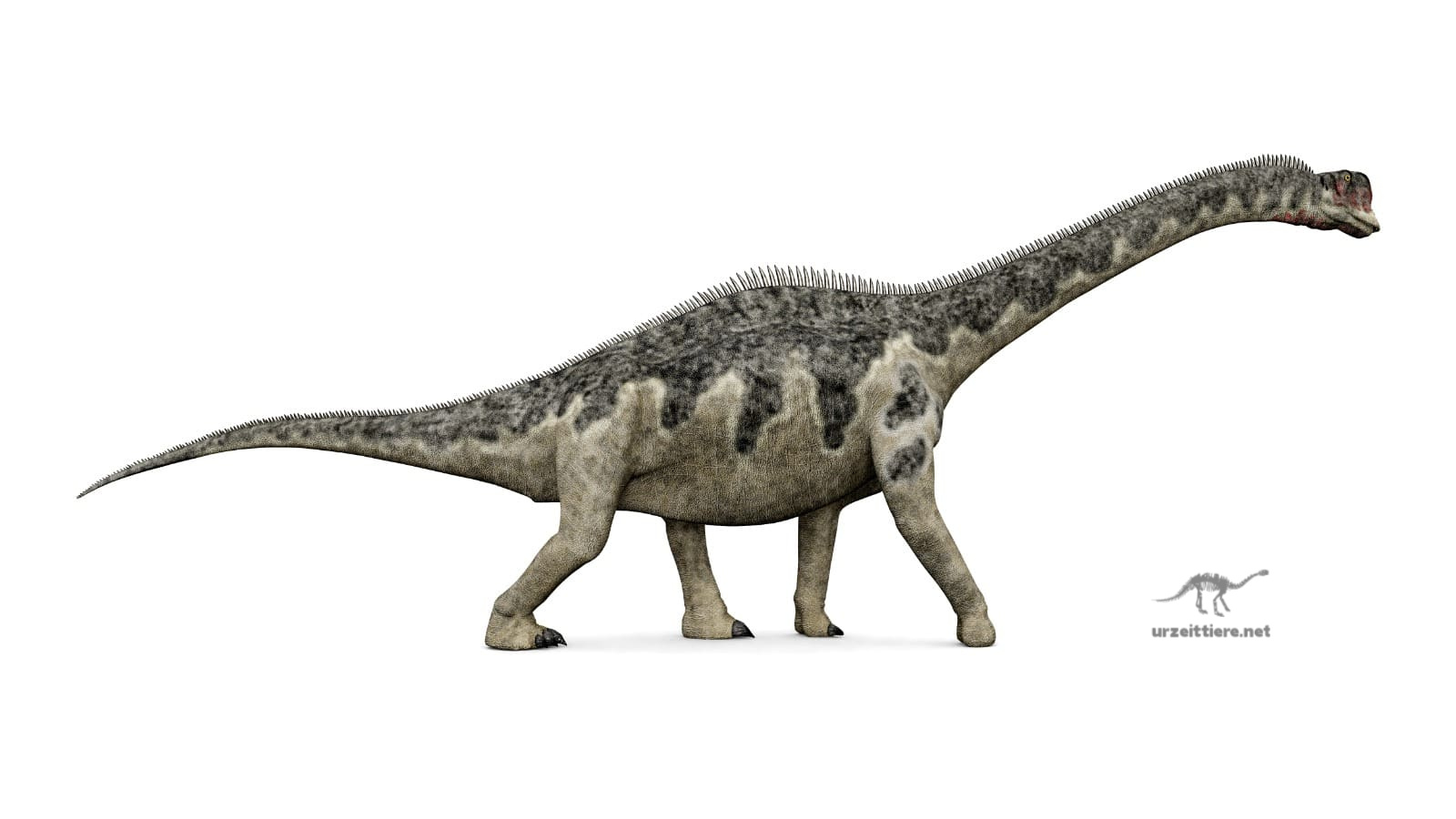
Europasaurus was a small dinosaur of the sauropod family that lived in northern Germany during the Late Jurassic (middle Kimmeridgian, about 154 million years ago). It was seen as an example of insular dwarfism resulting from the isolation of a sauropod population on an island in the Lower Saxon Basin.
In fact, it was a very small sauropod, measuring only 6.2 m as an adult.
| Profile | Europasaurus |
|---|---|
| Prehistoric Era | Upper Jurassic (middle Kimmeridgian) ca. 154.7 million years |
| Order | Saurischia |
| Suborder | Sauropoda |
| Family | Macronaria |
| Tribe | Camarasauromorpha |
| Genus | Europasaurus |
| Species | Europasaurus holgeri |
| Height | 2 meter |
| Length | 8 meter |
| Weight | 1 ton |
| Territory | Northern Germany, (Langenberg limestone quarry near Göttingerode) |
The habitat of Europasaurus was a subtropical island. The island was located in the Tethys Sea, 150 million years ago. It was about 100,000 km² and its climate was warm and humid.
Nevertheless, the island was not covered by dense rainforest, but by meadows, forests and rivers. The vegetation was dominated by horsetails. So the local climate was warmer than today. There were trees there, such as primitive conifers, an abundance of ferns and some flowering plants.
It is certain that Europasaurus evolved from larger sauropod ancestors. These giant sauropods roamed mainland Europe during the middle to late Jurassic period.
While the average sauropod was 40 to 50 feet long, Europasaurus was only 20 feet long. (For comparison, "Europasaurus" is about the same size as "Littlefoot" in the award-winning movie "The Land Before Time" . Littlefoot was a young brontosaurus).
Like other island dwarfs, Europasaurus was smaller than its mainland ancestors - a feature called "island dwarfism" that is still observed today in island-dwelling bird species, mammals, and even fish.
The "island archipelago" model has been proposed as an explanation for the occurrence of so many dwarf sauropod species in a relatively small region.
Europasaurus is one of the best examples of this phenomenon, as its bone structure suggests that dwarfing was caused by its slower growth rate compared to that of its giant relatives, rather than by cessation of growth at an early age.
Histological analyses of several specimens of Europasaurus have revealed that it is a unique dwarf species and not a juvenile of an extant taxon such as Camarasaurus.
Thus, the reptile's small size was an evolutionary adaptation to the limited resources of its island habitat.
Europasaurus evolved its small size due to a largely reduced growth rate, and thus gained size more slowly than larger relatives on the mainland.
In 1998, a single sauropod tooth was discovered by private fossil collector Holger Lüdtke in Germany.
This discovery turned out to be a huge find, as the quarry in question contained elements from more than 10 individuals. In 1999, a team of scientists began excavations in the quarry.
In 2001 and 2002, further excavations were carried out, uncovering more than 40 skeletons belonging to individuals of different ages.
Some of the fossils were partially articulated, including some juvenile individuals, which allowed scientists to make educated guesses about the appearance of the individual when alive. However, not all of the remains from the site were from the same species.
With this latest discovery, "Europasaurus holgeri" may be the smallest sauropod dinosaur found to date.
Image source:Europasaurus ©urzeittiere.net
Size: Slate Weasel, CC0, via Wikimedia Commons
Europasaurus holgeri Scene: Gerhard Boeggemann, CC BY-SA 2.5 https://creativecommons.org/licenses/by-sa/2.5, via Wikimedia Commons
Disclaimer: This post includes Amazon product images that include affiliate links to Amazon. As an Amazon Associate I earn from qualifying purchases.